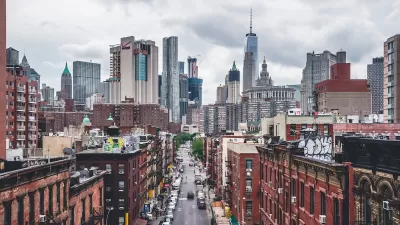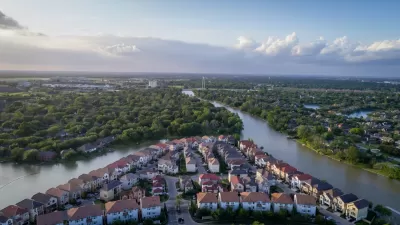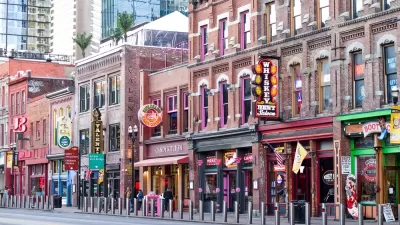Even if the swelling modern metropolis doesn't reflect the gleaming city of science fiction, Edwin Heathcote finds much to be optimistic about with regard to the future of cities on a rapidly urbanizing planet.
The numbers are astonishing. After surpassing the threshold at which more people live in cities than do not for the first time in recorded history in the last few years, 75 percent of humans will live in cities within 20 years.
"Can cities cope with these explosive increases in population?" asks Heathcote. "The city of the future used to be envisioned as a sci-fi landscape of flying cars and elevated walkways, of skyscrapers and spaceports. But now we are more likely to see the grim, endless expanses of mass-produced housing on the edges of the booming Chinese cities, or the self-built shacks of the informal settlements tumbling down hillsides adjacent to some of the world’s most desirable property."
"Yet something keeps people coming," he says. "The worst abuses of corruption and slum landlords, of homelessness and joblessness, are not enough to send people back to the country. It is rarely remarked on, but once rural dwellers make up their minds to come to the city, no matter how tough life is without the support networks of the village, they almost never return. City life seduces." Or perhaps they don't have any other choice.
"If the migration is inevitable, the question is: how can we create more equitable cities? How can we alleviate the worst of the problems facing the new 2bn and the countless others who are already there?"
FULL STORY: The urban dream lives on

Maui's Vacation Rental Debate Turns Ugly
Verbal attacks, misinformation campaigns and fistfights plague a high-stakes debate to convert thousands of vacation rentals into long-term housing.

Planetizen Federal Action Tracker
A weekly monitor of how Trump’s orders and actions are impacting planners and planning in America.

In Urban Planning, AI Prompting Could be the New Design Thinking
Creativity has long been key to great urban design. What if we see AI as our new creative partner?

Cal Fire Chatbot Fails to Answer Basic Questions
An AI chatbot designed to provide information about wildfires can’t answer questions about evacuation orders, among other problems.

What Happens if Trump Kills Section 8?
The Trump admin aims to slash federal rental aid by nearly half and shift distribution to states. Experts warn this could spike homelessness and destabilize communities nationwide.

Sean Duffy Targets Rainbow Crosswalks in Road Safety Efforts
Despite evidence that colorful crosswalks actually improve intersection safety — and the lack of almost any crosswalks at all on the nation’s most dangerous arterial roads — U.S. Transportation Secretary Duffy is calling on states to remove them.
Urban Design for Planners 1: Software Tools
This six-course series explores essential urban design concepts using open source software and equips planners with the tools they need to participate fully in the urban design process.
Planning for Universal Design
Learn the tools for implementing Universal Design in planning regulations.
Appalachian Highlands Housing Partners
Gallatin County Department of Planning & Community Development
Heyer Gruel & Associates PA
Mpact (founded as Rail~Volution)
City of Camden Redevelopment Agency
City of Astoria
City of Portland
City of Laramie





























